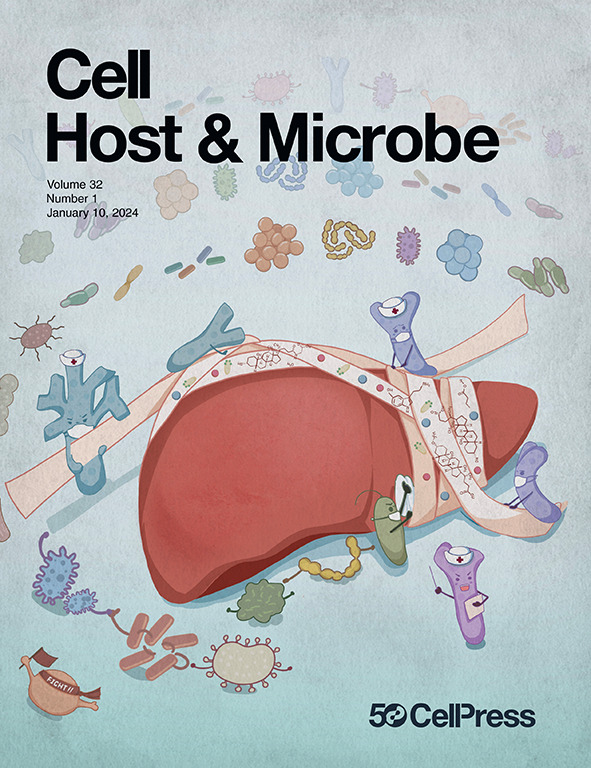狂犬病糖蛋白的深度突变扫描定义了突变约束和抗体逃逸突变
IF 18.7
1区 医学
Q1 MICROBIOLOGY
引用次数: 0
摘要
狂犬病毒每年导致近6万人死亡。目前正在开发针对狂犬病糖蛋白(G)的抗体,作为暴露后的预防措施,但G的突变会使这种抗体失效。在这里,我们使用假病毒深度突变扫描来测量G的所有单氨基酸突变如何影响一组抗体的细胞进入和中和。这些测量确定了对G功能至关重要的位点,并定义了对临床抗体有吸引力的限制性区域,包括蛋白质的顶端和基部。我们提供了八种单克隆抗体的完整逃逸突变图,包括一些临床使用或开发中的单克隆抗体。大多数抗体的逃逸突变存在于一些天然狂犬病毒株中。总的来说,这项工作提供了关于G突变的功能和抗原效应的全面信息,可以为开发稳定的疫苗抗原和抗狂犬病遗传变异的抗体提供信息。本文章由计算机程序翻译,如有差异,请以英文原文为准。

Deep mutational scanning of rabies glycoprotein defines mutational constraint and antibody-escape mutations
Rabies virus causes nearly 60,000 human deaths annually. Antibodies that target the rabies glycoprotein (G) are being developed as post-exposure prophylactics, but mutations in G can render such antibodies ineffective. Here, we use pseudovirus deep mutational scanning to measure how all single-amino-acid mutations to G affect cell entry and neutralization by a panel of antibodies. These measurements identify sites critical for G function and define constrained regions that are attractive epitopes for clinical antibodies, including at the apex and base of the protein. We provide complete maps of escape mutations for eight monoclonal antibodies, including some in clinical use or development. Escape mutations for most antibodies are present in some natural rabies strains. Overall, this work provides comprehensive information on the functional and antigenic effects of G mutations that can inform development of stabilized vaccine antigens and antibodies that are resilient to rabies genetic variation.
求助全文
通过发布文献求助,成功后即可免费获取论文全文。
去求助
来源期刊

Cell host & microbe
生物-微生物学
CiteScore
45.10
自引率
1.70%
发文量
201
审稿时长
4-8 weeks
期刊介绍:
Cell Host & Microbe is a scientific journal that was launched in March 2007. The journal aims to provide a platform for scientists to exchange ideas and concepts related to the study of microbes and their interaction with host organisms at a molecular, cellular, and immune level. It publishes novel findings on a wide range of microorganisms including bacteria, fungi, parasites, and viruses. The journal focuses on the interface between the microbe and its host, whether the host is a vertebrate, invertebrate, or plant, and whether the microbe is pathogenic, non-pathogenic, or commensal. The integrated study of microbes and their interactions with each other, their host, and the cellular environment they inhabit is a unifying theme of the journal. The published work in Cell Host & Microbe is expected to be of exceptional significance within its field and also of interest to researchers in other areas. In addition to primary research articles, the journal features expert analysis, commentary, and reviews on current topics of interest in the field.
 求助内容:
求助内容: 应助结果提醒方式:
应助结果提醒方式:


